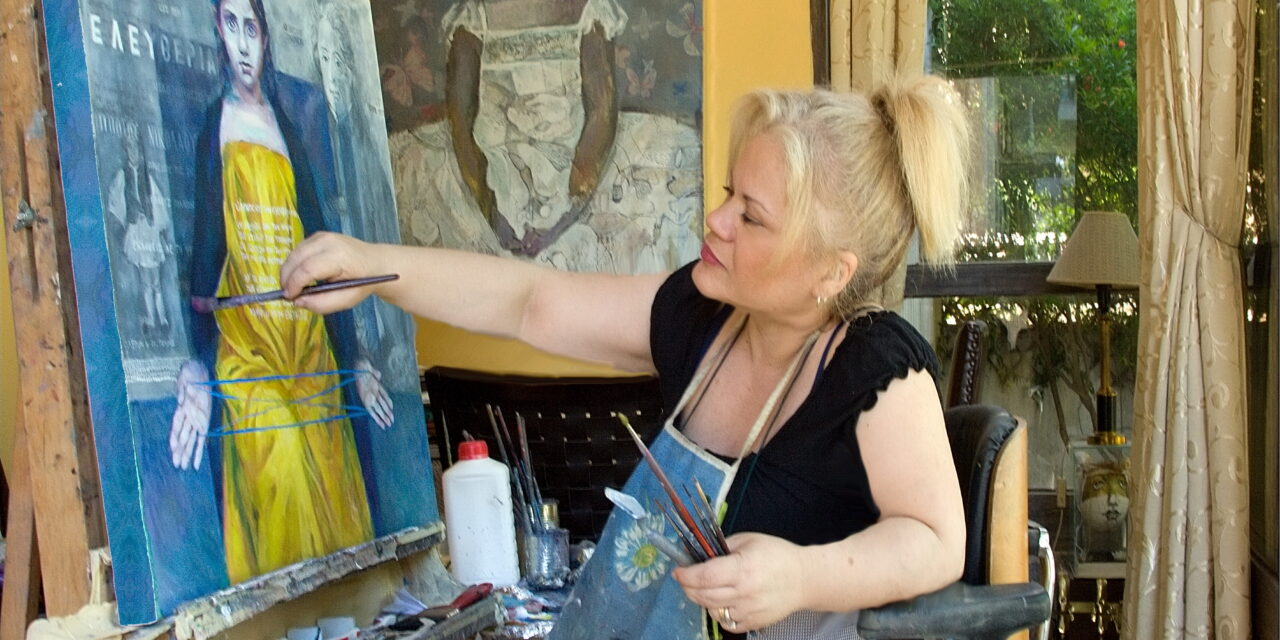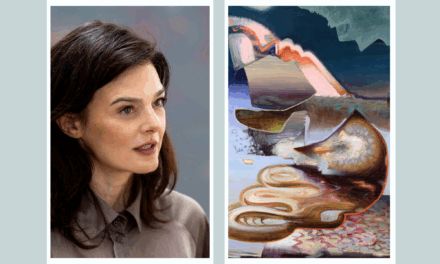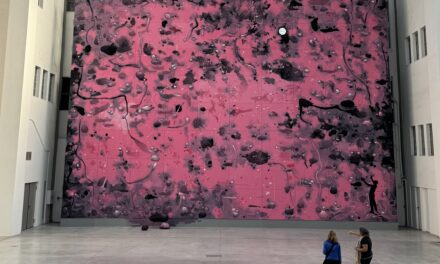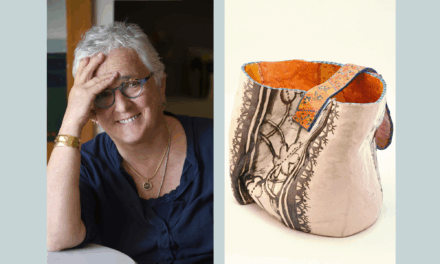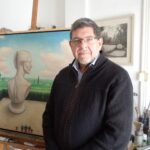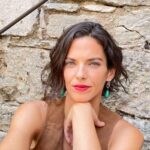Infusing her paintings with vibrant colors and using clear forms, Smaragda Papoulia creates a multifaceted, reflective universe. Through her dynamic art, she encapsulates beauty, balance and mindfulness. Beyond its visual appeal, her work creates strong emotions and an intimate link between the depicted figures and the viewer.
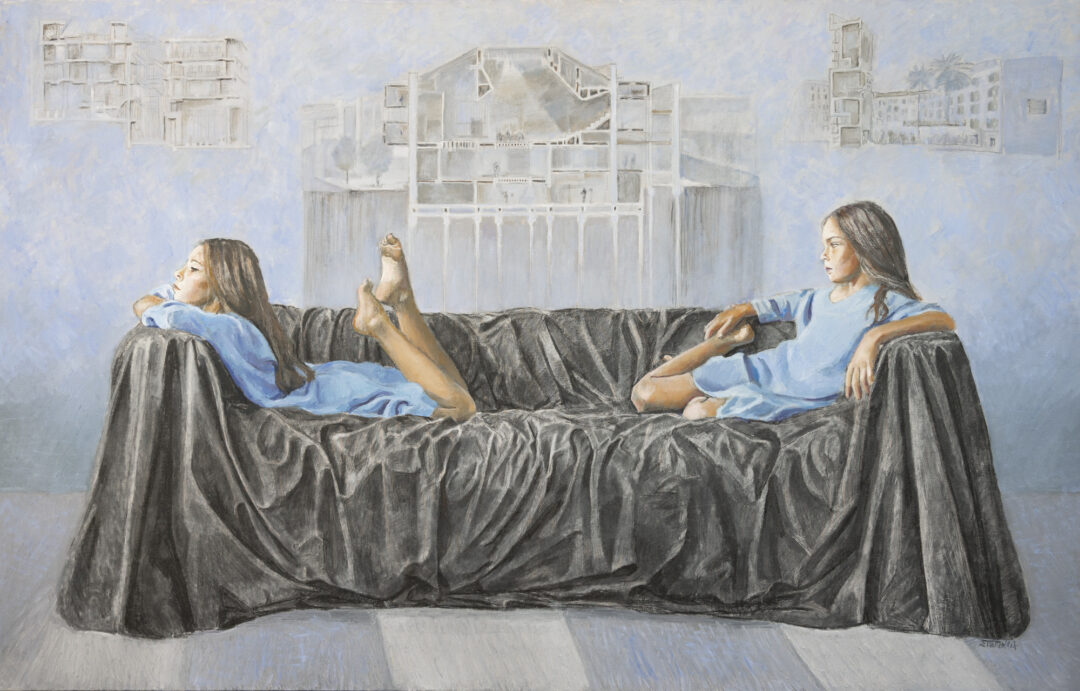
The figures’ peculiar gaze as well as their multiple representations create a mysterious atmosphere open to various interpretations. Blending uniqueness with universality, painting with poetry, representation with symbolism, Smaragda Papoulia highlights the transformative power of art and encourages us to engage with the ineffable aspects of our own experiences.
Her anthropocentric art is a quest to the depth of the human soul. Her female figures, erotic, melancholic or angry, are in search of their place in the modern world. They struggle to define themselves in a complex reality. Talented, restless, hard-working and persistent in her work, Smaragda Papoulia explores emotions echoing her belief in the power of art to connect with the essence of human experience.
She was born in Athens. She studied painting at the Athens School of Fine Arts under Tetsis and Valavanidis, and set design under Vasileiadis. She graduated with honors. Her works can be found in museums, galleries, the Ministry of Culture, Eurobank as well as private collections.
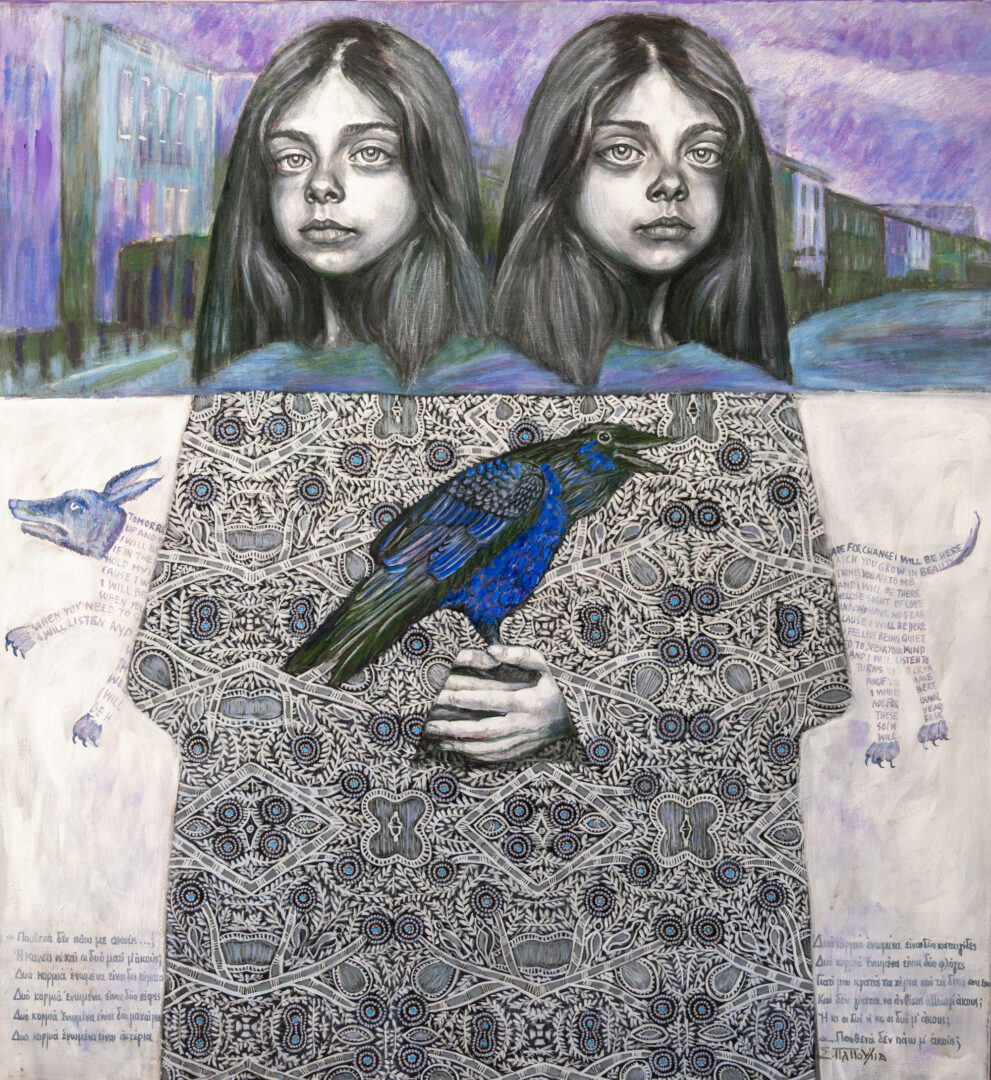
Smaragda Papoulia shares her artistic perspectives and endeavors with Greek News Agenda*.
Your paintings are deeply anthropocentric. The figures are desperately seeking their place in this world. What are the main issues that concern you as a painter?
My paintings have always been anthropocentric. The human figure moves me deeply. During the painting process, we sometimes discover positive and negative aspects of the human being; its beauty, strength, passion, or even fears that we have experienced ourselves.
In terms of form, I draw inspiration from different sources. I am usually intrigued by figures with expressive movements or a peculiar look, perhaps a little mysterious or simply wondering, looking for answers. As far as I am concerned, I am struggling to help them find their place on the canvas, offering them a new life. I am particularly interested in creating a new entity, rich in pictorial values and emotions. Thus, the viewer will be moved by an autonomous existence.
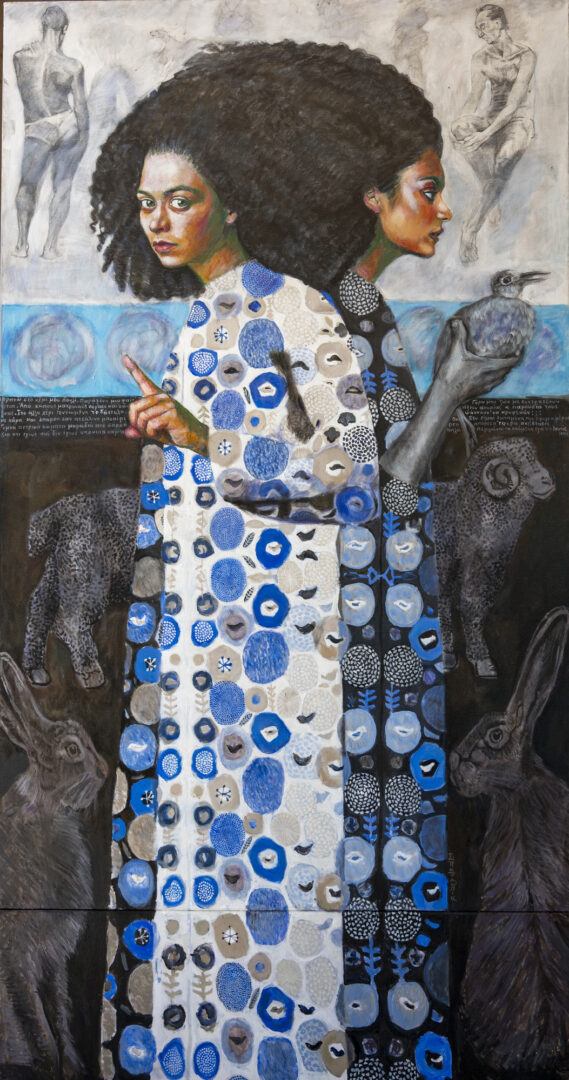
Your latest work focuses on multiple female figures. What does this imaginative mirroring allude to?
The female figures in my works are repeated at least once in the same painting, mirroring each other in some way; either looking at each other, or turning against one another or facing the opposite direction. This way, different aspects and deeper meanings are revealed. Realities we would be unable to see if only one figure was depicted.
Apart from the physical characteristics, I attribute special importance to the emotional and psychological aspects of my figures, which is revealed through the glow or darkness of a glance, the rotation of a limb or clasped hands in front of the body, the outstretched fingers of a hand seeking something to grasp…From my perspective this artistic expression reveals a very particular kind of psychoanalysis.
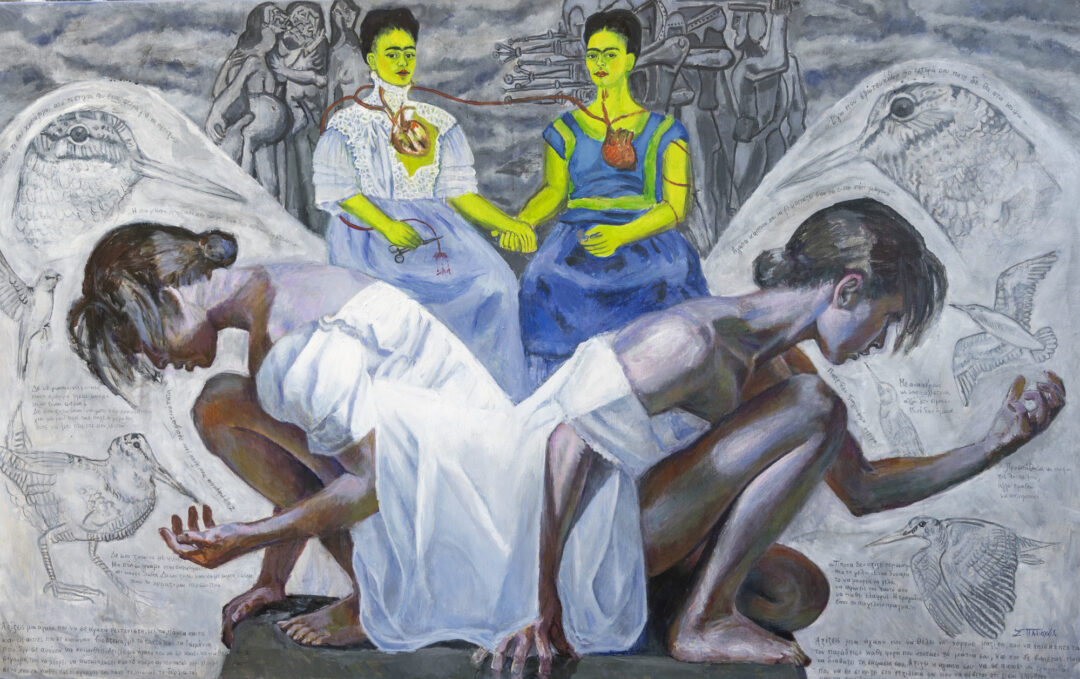
Symbols, animals, plants are ubiquitous in your paintings. What does their depiction imply?
I often draw animals, such as cats, dogs and horses, but also birds, and all of these are in dialogue with my human figures, complementing each other. Thus, my work simultaneously embraces different forms of life and encourages empathy.
Engineering, inventions and airplanes are also depicted in my compositions, with their pattern or color differentiated. To create them I draw inspiration from various photographs but also from great painters whose work I have always admired. This way, I feel that my effort to create is reinforced by their heritage. I honor them and I move forward deeply inspired by them.
Your works are often accompanied by poems. Ηow did this merge come about?
Both poetry and painting are autonomous and highly expressive forms of art. Despite their differences, they share many similarities. I feel that they both invite me to try them at the same time, in a single space. They both have the potential to move the viewer or reader and I believe that their combination reinforces the result at emotional level. This is the reason that I poems written by me or others are incorporated in my paintings. I believe they lead to a more complete enjoyment of art.
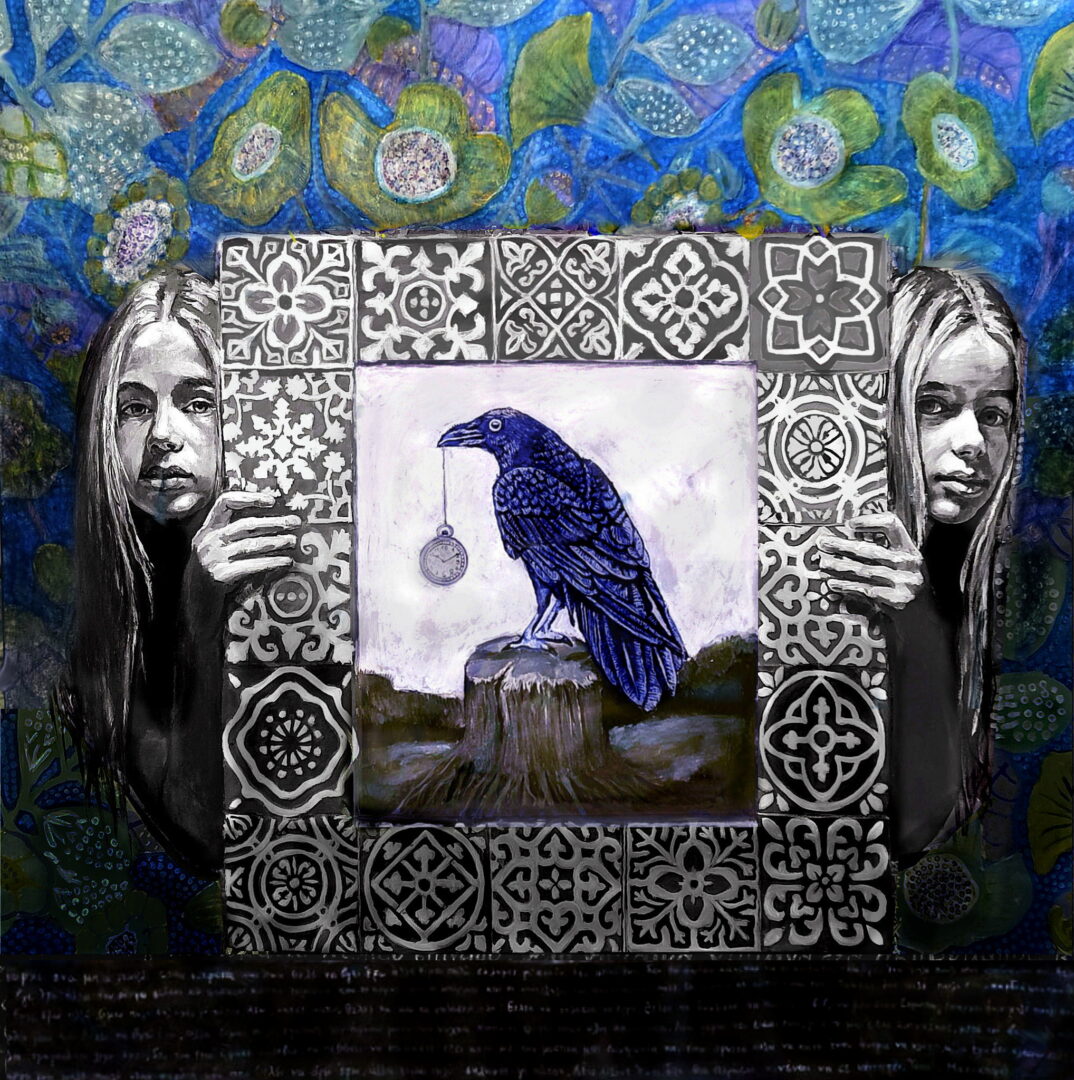
Your works speak directly to the soul of the viewer. Do you believe that this strong emotional result could be achieved through nonrepresentational forms of art?
I mainly use realistic depictions in my work. Sometimes, however, I resort to freer forms and brushstrokes, without focusing on the realistic representation. I believe, for example, that the expressive eyes looking at you and the forms that are so realistic, are giving the impression that they want to leave the canvas and come up to you; they really speak to the soul of the of the viewer. At the same time, I believe that an abstract painting, a quick and decisive brushstroke, lights glimmering among darker tones, even dripping paint on a surface can produce an equally emotional result. Therein lies the “music”, the magic of non-representational art and this is a very demanding and painstaking process.
*Interview by Dora Trogadi
TAGS: ARTS

